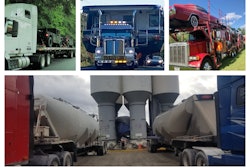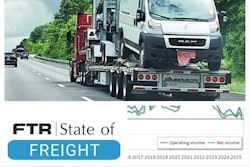To varying extents, all owner-operators, whether leased to a carrier or not, retain some control over dispatch, yet if greater independence is your goal, a carrier with a true self-dispatch program with high degrees of autonomy may be your best choice.
Effectively self-dispatching may well be the most difficult task an owner-operator business is saddled with. There are a seemingly unending number of moving pieces that will affect the outcome of any decision made about any load.
Yet the difference-maker when it comes to load selection might ultimately be your mindset -- whether you’re able to accept the responsibility and tap into your critical thinking faculties, or not.
There’s a reason dispatch service providers for independents proliferate, after all -- many new owners are ill-prepared to do it on their own. Yet consider that the fees you’ll pay to any service provider can be substantial, and on top of the margins a broker earns on the movement of a load. As with the percentage cut a carrier will take if you're leased, fees for a dispatch service can be as great as 10% -- annualize this and it can easily reach a $15K-$20K cost.
Why not pay yourself to do the job?
The skills needed for expert self-dispatching won’t be learned in a few days of online classes, orientation or reading. With the speed at which new services and technologies are changing, even the experienced are sometimes frustrated. The successful, however, know how to combine their historical knowledge and habits with the way customers are going to communicate information now.

[Related: Beat the 'winner's curse' of auction-type negotiation for better freight rates]
When staring at a list of loads, whether it’s a handful or a hundred posted opportunities, whether or not the owner has a strategic business plan makes no difference. It’s easy to just get frozen in time, unable to make the right call -- or any call, in the worst cases. Any number of factors influence the indecision: all the what ifs to overcome, of course, and difficulty asking for help, given the peer pressure imagining what other owner-operators might say.
As owners first begin selecting loads, one of the biggest issues is failure in all the excitement to vet the intimate details. The habit any company driver learns is like as not the prime objective to stay loaded and drive. The whole trucking industry has for decades bombarded drivers and owners with ads and awards based on gross pay and miles, promising hundreds of thousands of dollars in income to a community of drivers who always have dreams of earning more. Yet the failure to receive complete and accurate details, or knowing what to ask, too often leaves you sitting at a customer delayed or even without the load you were promised.
For new owners recently invested in high-dollar equipment, the pressure of the payments due or overdue, like so many other pieces of the truck ownership business, starts to affect the decisions you make when there is no cash flow to cover the promises you made when you signed the paperwork.
Find a way to slow down the selection process just enough to stay in control of your decisions. Recognize what is fast thinking -- our reflexes, knee-jerk reactions -- and when to tap the brakes and downshift into slow thinking. Learn to say yes without saying yes and say no without saying no, by asking the right questions to uncover the details you need to assess the potential profit in any load.
[Related: Evaluate earning potential with Overdrive's Load Profit Analyzer]
Here are a few questions to ask yourself and/or a load’s broker to get to the broader business decisions or a single load’s details -- you’ll need both to make the right evaluation:
- Just what is limiting your load choices, whether time (hours of service), equipment type or specs, a desire to stay within a particular region, or self-limiting decisions like your personal “do not haul” list?
- How much gross revenue will you need to cover cash flow obligations at home and for the business?
- What is the minimum rate per mile or per day for any load you need to turn an adequate profit?
With clarity on questions 1 and 2 in hand, to get toward 3, start with costs -- fixed costs should be simpler to calculate and maintain control over given they only change when you add or subtract a payment. They’ll include any truck note, such as it may be, insurances, plates and permits, ELD service/cell phone and/or other services you subscribe to.
Total these monthly and divide by the number of days you are under a load in any given month. You could average for the year, but a more effective cost calculation may be to recalculate every month based on your prior month’s or prior quarter’s activity.
Handling variable costs is a trickier prospect. A variable cost per mile of a buck or more can be the norm, and it can change quite quickly. It’s important to re-calculate your variable costs for load evaluation often. Also: learn how to consider variable costs in relation to time -- not just miles/distance.
Armed with up-to-date cost per day and cost per mile figures, you can turn more confidently to evaluation both of any load’s value and your own rate structures.
Read next: Finding your niche haul: The tradeoffs and triumphs in freight specialization










